From Habitat magazine - issue 11
A new bach ensures this much-loved family holiday location will continue to be used and treasured.
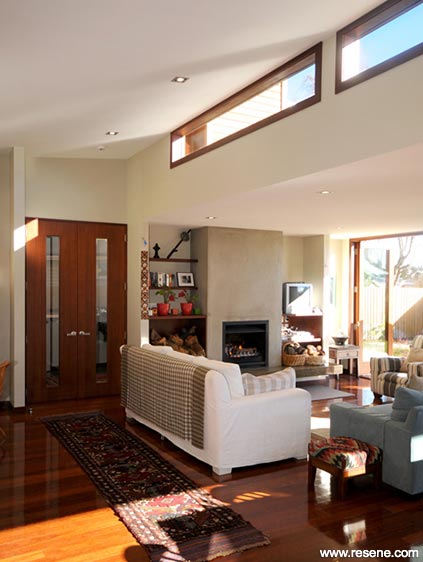
The bach is used year-round, hence the fireplace.
Going to the bach has always been about escape, and is often entwined with nostalgia. It’s also about being more connected with the seasons, and the beauty of mountains, lake, river or sea.
But can that sense of escape really happen when your bach is cool, modern, and just 25 minutes drive up the road?
The owners of this Leithfield Beach bach, Jenny and John McCarthy, are emphatic that it can. Leithfield Beach is just north of Christchurch.
In fact this piece of untamed, sometimes dramatic coastline holds so many extended family memories, going back as far as Jenny’s grandmother, that building here was the obvious move. “This is where we feel a sense of belonging,” she says.
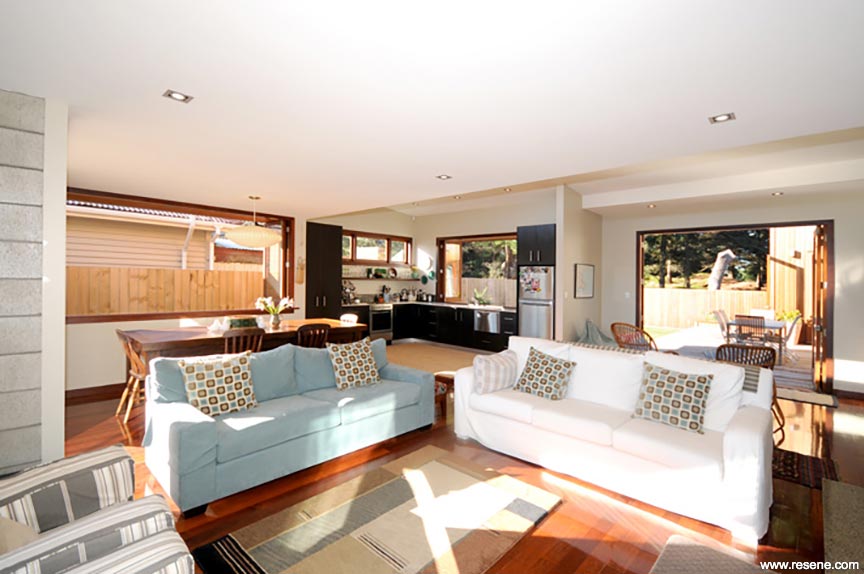
“There’s just no way I would ever consider selling this land,” Jenny says of the plot which used to be home to a diminutive 1930s weatherboard bach. The old house might have had character, but it was becoming increasingly run-down and leaky.
Jenny was attached to certain characteristics of the old dwelling, such as its L-shape. Other features – like the sound of the sea and the smell of macrocarpa trees after rain – couldn’t be lost but could be emphasised with a great new design. Enter architectural designer John Ayers of Creative Studios, who was first approached about masterminding a new bach for the site three years ago.
John Ayers normally designs restaurants, bars and commercial spaces. As well as being his first ever bach, this project proved to be his favourite, that year.
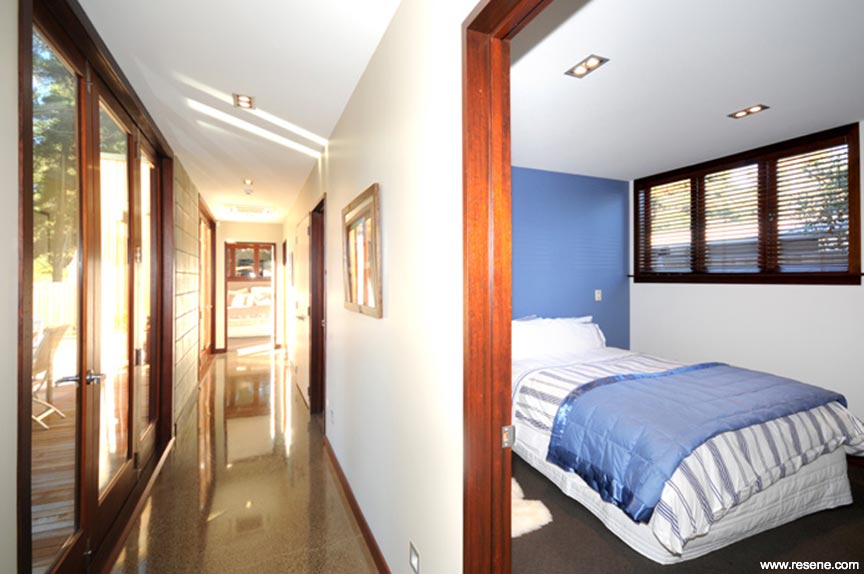
The brief John McCarthy gave designer John was “boxy containers meet urban style”. The couple didn’t mind if the house was noticeably different from the older neighbouring houses, however, both Jenny and John wanted subtle materials and colours that blended with the tones and textures of the coastal setting.
Next, Jenny showed John the furniture and artwork which needed to be accommodated within the design. Plus an existing tree whose body and soul were not to be parted with on mere account of the new house or its deck.
John laughs, as he recalls that his initial plan had the tree’s branches rising through the middle of the dining table. John’s amended plans moved the house forward by two metres. The sculptural tree now takes pride of place between house and sea in the grooved kwila decking, and reminds John of “the bonsai-looking start of a Japanese garden”.
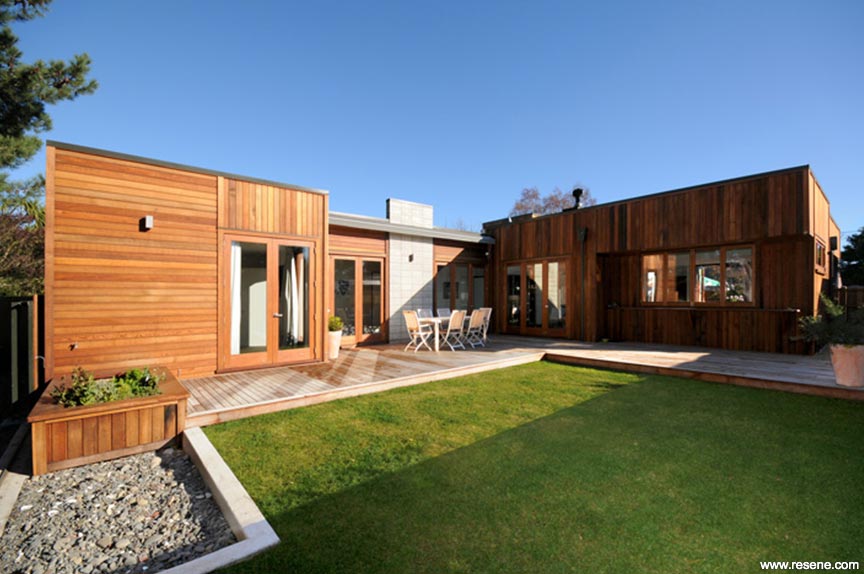
Jenny got her L-shaped house while her husband received his shipping-container image and a highly functional, energy-efficient house to boot.
John Ayers is adamant about making the best use of solar energy. The sun’s feel-good factor should never be underestimated, he stresses. He always strives to “play God with available sun and light; to move and control them as much as possible”.
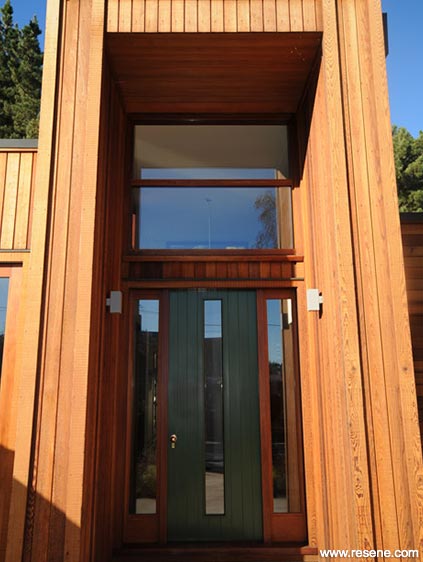
The front door in Resene Deep Khaki is surrounded by a dramatic extra-high entrance.
For instance, the bach’s entranceway is what he describes as a ‘heat-sump’ with its carefully positioned glass panels and quantities of polished concrete to trap the sun’s heat. Both heat and light are channelled through the house, not forgetting or excluding the bedrooms. Each of the three bedrooms faces north and has sliding glass doors to outdoors. Every space opens up, allowing cooling breezes through when needed.
The kitchen, Jenny’s hub, gets all-day sun, as well as her coveted view through the big macrocarpa that stand on the dunes. The trees provide excellent shelter from Canterbury’s prevailing easterly winds. In addition, John designed the garden’s east boundary wall to roll aside for access to the dunes.
“One thing I didn’t want for this bach was a design trying to look too temporary, with entire house walls opening up and disappearing. I think that can look a bit contrived,” John says.
The timber exterior is a mix of vertical and horizontal cedar shiplap finished in Resene Waterborne Woodsman oil stain in Natural. Kwila was chosen for the floors. Outside it’s grooved for the large expanse of decking. Inside it’s polished. Windows are a marriage of the two woods – cedar sashed in kwila frames.
John’s background in designing entire bar and restaurant scenes means he’s equally adept at interior fit-outs. The walls in the living areas are painted Resene Quarter Parchment, Resene Rice Paper, and Resene Half Rice Paper. They complement the browns and touches of red in the McCarthy’s large Aboriginal and Samoan wall hangings. Other colours chosen were Resene Incognito, Resene Lifesaver, Resene Palm Leaf, with Resene Deep Khaki for the front door.
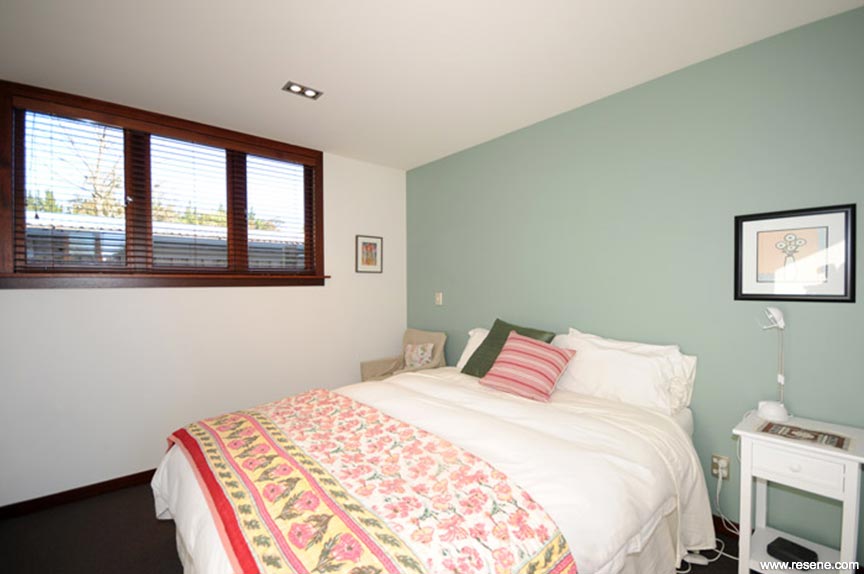
Although he strives to possess no signature style, John Ayers is happy with the way this bach has a connection to its humble predecessor, and to its surroundings. He’s also pleased with the connection between inside and out, and of each room in relation to the others.
The McCarthys, for their part, are finding the bach increasingly bringing the family together. “We underestimated how regularly this place would draw us back… even sometimes during the week,” Jenny says. “We’re finding we absolutely love it.”
Clean, fresh coastal light and colours
Eileen Law, interior designer, suggests this alternative scheme:
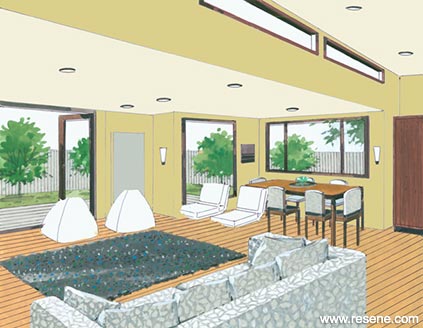
This scheme echoes clean, fresh coastal light and colours, using hints of fresh yellow like Resene Lemon Twist, soft blues (Resene Nebula) and greens and light sandy-coloured flooring. The furniture is also relaxed and informal, with comfortable Tio chairs and outdoor beanbags adding a fun element (these can also be dragged outside onto the deck). A slouchy low sofa is perfect for sprawling on. This scheme helps bring the outdoors inside and creates a beach holiday feel where you can kick off your jandals and relax.
Contact: phone: 03 442 7998 mobile: 021 0246 6558 email: eileen@eileenlawdesign.com.
Accessories: The walls are Resene Lemon Twist, the blockwork wall is Resene Nebula, the ceilings are Resene Rum Swizzle and the trims are Resene Sambuca. 2.5 seater Wakefield sofa, from David Shaw, in Kit & Kaboodle, colour Rice, from Warwick Fabrics. Tio Chairs, from Conscious Design. Heina wall hanging in green, from Feel Good Fabrics. Extra-large Coast marine beanbags in colour Spa, from Coast New Zealand. Ecodure bamboo flooring in Natural(wide plank), from Bamboo Flooring.
Neutral palette that provides a great starting point to introduce colour and depth
Rochelle Andrews from Trinity Interior Design suggests this scheme:
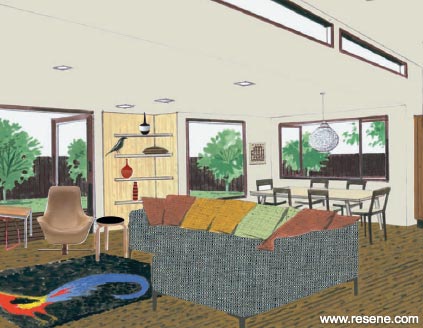
My approach with this room was to create a neutral palette providing a great starting point to introduce colour and depth with furniture, finishes and accessories. The main focal point is the feature rug, which provides some vibrancy and fun to an otherwise neutral space. Internal and external elements are tied together due to their strong visual connection. The existing concrete block wall has been lined with Fijian kauri plywood veneer. The introduction of this natural material together with matching shelves creates an attractive backdrop for select ceramics and objects. Furniture items have been selected due to their simplicity and comfort creating a warm, playful and inviting environment.
Contact: phone: 09 486 0599 mobile: 021 108 5128 email: rochelle@trinityinteriordesign.co.nz.
Accessories: The walls, trims and ceiling are Resene Milk White from the Resene Karen Walker range. The fence is Resene Tiri and the deck stain is Resene Iroko in Resene Woodsman Decking Stain. Accents are matched to Resene Clockwork Orange, Resene Pulse and Resene Crisp Green. The striking rug is World from Designer Rugs. Miller corner sofa, from Forma, In Milano fabric, colour Shale, from Warwick Fabrics. Tan leather Mart chair by B&B Italia, Bitossi Line Rimini Corallo, Bitossi Line Lobster, Bitossi Bicolore, from Matisse. Stool 60 used as a side table, from Thonet. Royal Botania Flexy Table with teak top, from ECC Lighting & Furniture.
Words: Liesl Johnstone
Illustration Bruce Bryant
Search habitat magazine stories
Printed copies of habitat highlights are available from late March 2024 at Resene ColorShops and resellers, while stocks last. You can view back issues of habitat magazine online.
Specifiers:
If you have an idea, project or story that you think would suit habitat, we’d love to hear from you. Please drop us an email with your details and include photos if submitting a project.
Sign up for a DIY card and Save! Australia | New Zealand